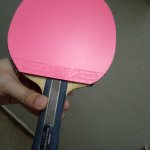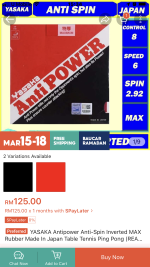This user has no status.
I think the FH chop is quite easy to do with inverted. You get a larger swing and more control over the ball. That is why pips are used on the backhand side, because you have a harder time controlling heavy speed/spin coming to your BH.
It comes down to preference and training, I believe. Masato Shiono, Matsushita, Joo, Koudai to name a few all FH chop with the "fast" rubbers. On the women's side, there are many more using tenergy that chop FH the majority of the time.
It comes down to preference and training, I believe. Masato Shiono, Matsushita, Joo, Koudai to name a few all FH chop with the "fast" rubbers. On the women's side, there are many more using tenergy that chop FH the majority of the time.












